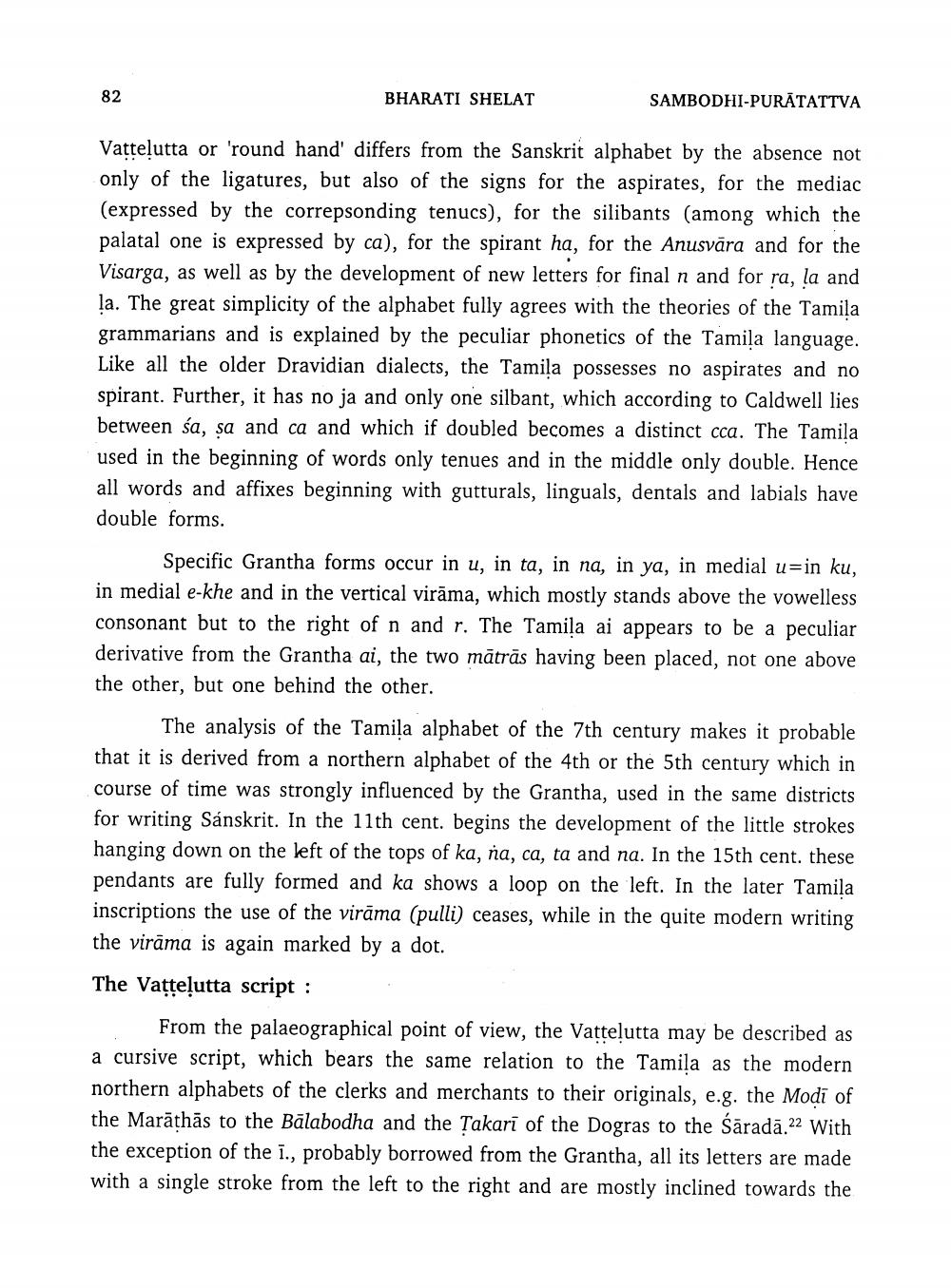________________
BHARATI SHELAT
SAMBODHI-PURĀTATTVA
Vattelutta or 'round hand' differs from the Sanskrit alphabet by the absence not only of the ligatures, but also of the signs for the aspirates, for th (expressed by the correpsonding tenucs), for the silibants (among which the palatal one is expressed by ca), for the spirant ha, for the Anusvära and for the Visarga, as well as by the development of new letters for final n and for ra, la and la. The great simplicity of the alphabet fully agrees with the theories of the Tamila grammarians and is explained by the peculiar phonetics of the Tamila language. Like all the older Dravidian dialects, the Tamila possesses no aspirates and no spirant. Further, it has no ja and only one silbant, which according to Caldwell lies between śa, șa and ca and which if doubled becomes a distinct cca. The Tamila used in the beginning of words only tenues and in the middle only double. Hence all words and affixes beginning with gutturals, linguals, dentals and labials have double forms.
Specific Grantha forms occur in u, in ta, in na, in ya, in medial urin ku, in medial e-khe and in the vertical virāma, which mostly stands above the vowelless consonant but to the right of n and r. The Tamila ai appears to be a peculiar derivative from the Grantha ai, the two mātrās having been placed, not one above the other, but one behind the other.
The analysis of the Tamila alphabet of the 7th century makes it probable that it is derived from a northern alphabet of the 4th or the 5th century which in course of time was strongly influenced by the Grantha, used in the same districts for writing Sanskrit. In the 11th cent. begins the development of the little strokes hanging down on the left of the tops of ka, na, ca, ta and na. In the 15th cent. these pendants are fully formed and ka shows a loop on the left. In the later Tamila inscriptions the use of the virāma (pulli) ceases, while in the quite modern writing the virāma is again marked by a dot.
The Vatteļutta script :
From the palaeographical point of view, the Vattelutta may be described as a cursive script, which bears the same relation to the Tamila as the modern northern alphabets of the clerks and merchants to their originals, e.g. the Modi of the Marāthās to the Balabodha and the Takarī of the Dogras to the Sāradā.22 With the exception of the i., probably borrowed from the Grantha, all its letters are made with a single stroke from the left to the right and are mostly inclined towards the




